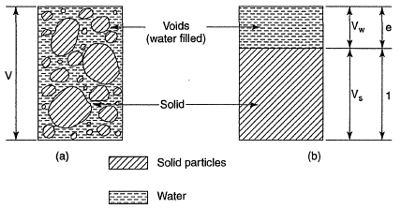"Degree of saturation" of a soil sample is not an index test but derived from its natural moisture content, void ratio and specific gravity. Degree of saturation is denoted by Sr which has the unit of percent describes the degree of water filling in voids of a soil mass.
In practical, degree of saturation varies in the range of 0% ~ 100% and never reaches the margin of 0% or 100%. However, some of geotechnical laboratories in Vietnam suppose that the value of saturation degree is higher than 100% for organic soils (!)
In a soil mass there are usually two components: solid soil particles and pores (voids) which contain air and water. Because the air volume is neglectable and therefore there are two components only (solid particles and water) in the soil mass.
If there is no water in voids, the soil mass is completely dry and Sr = 0%. In contrast, if all voids are filled up by water then the soil mass is completely saturated and Sr = 100%. In the case of Sr > 100%, how could the water be held in the soil mass ???
| Completely dry soil has two phases only: solid and air (after K.H. Head, 2006) |

|
| Completely saturated soil has two phases only: solid and water (after K.H. Head, 2006) |

|













 "Degree of saturation" of a soil sample is not an index test but derived from its natural moisture content, void ratio and specific gravity. Degree of saturation is denoted by Sr which has the unit of percent describes the degree of water filling in voids of a soil mass.
"Degree of saturation" of a soil sample is not an index test but derived from its natural moisture content, void ratio and specific gravity. Degree of saturation is denoted by Sr which has the unit of percent describes the degree of water filling in voids of a soil mass.